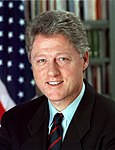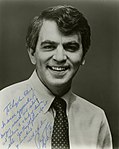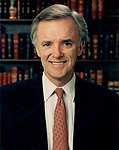Democratic Party (United States) presidential primaries, 1992
|
|
||||||||||||||||||||||||||||||||||||||||||||||||||||||
|---|---|---|---|---|---|---|---|---|---|---|---|---|---|---|---|---|---|---|---|---|---|---|---|---|---|---|---|---|---|---|---|---|---|---|---|---|---|---|---|---|---|---|---|---|---|---|---|---|---|---|---|---|---|---|
|
||||||||||||||||||||||||||||||||||||||||||||||||||||||
|
||||||||||||||||||||||||||||||||||||||||||||||||||||||

|
||||||||||||||||||||||||||||||||||||||||||||||||||||||
|
||||||||||||||||||||||||||||||||||||||||||||||||||||||
The 1992 Democratic presidential primaries were the selection process by which voters of the Democratic Party chose its nominee for President of the United States in the 1992 U.S. presidential election. Arkansas Governor Bill Clinton was selected as the nominee through a series of primary elections and caucuses culminating in the 1992 Democratic National Convention held from July 13 to July 16, 1992, in New York City.
During the aftermath of the Gulf War, President George H. W. Bush's approval ratings were extremely high. During one point after the successful performance by U.S forces in Kuwait, President Bush's approval ratings were 89%. As a result, several high-profile candidates such as Mario Cuomo refused to seek the Democratic nomination for president. Senator (later Vice-President) Al Gore declined to seek the nomination because his son was struck by a car and was undergoing extensive surgery as well as physical therapy.
The Democrats lacked a high-profile viable candidate to face an incumbent Republican president. Still, several candidates such as Bill Clinton, Paul Tsongas and Jerry Brown chose to run. While Michael Dukakis received 111 electoral votes out of a possible 538 in 1988, Bill Clinton received 370 in 1992. Notably, he won Illinois, New Jersey, Vermont, California, and Maine, states which hadn't been Democratic for a long time, and which have continued to swing Democratic through 2016.
...
Wikipedia





